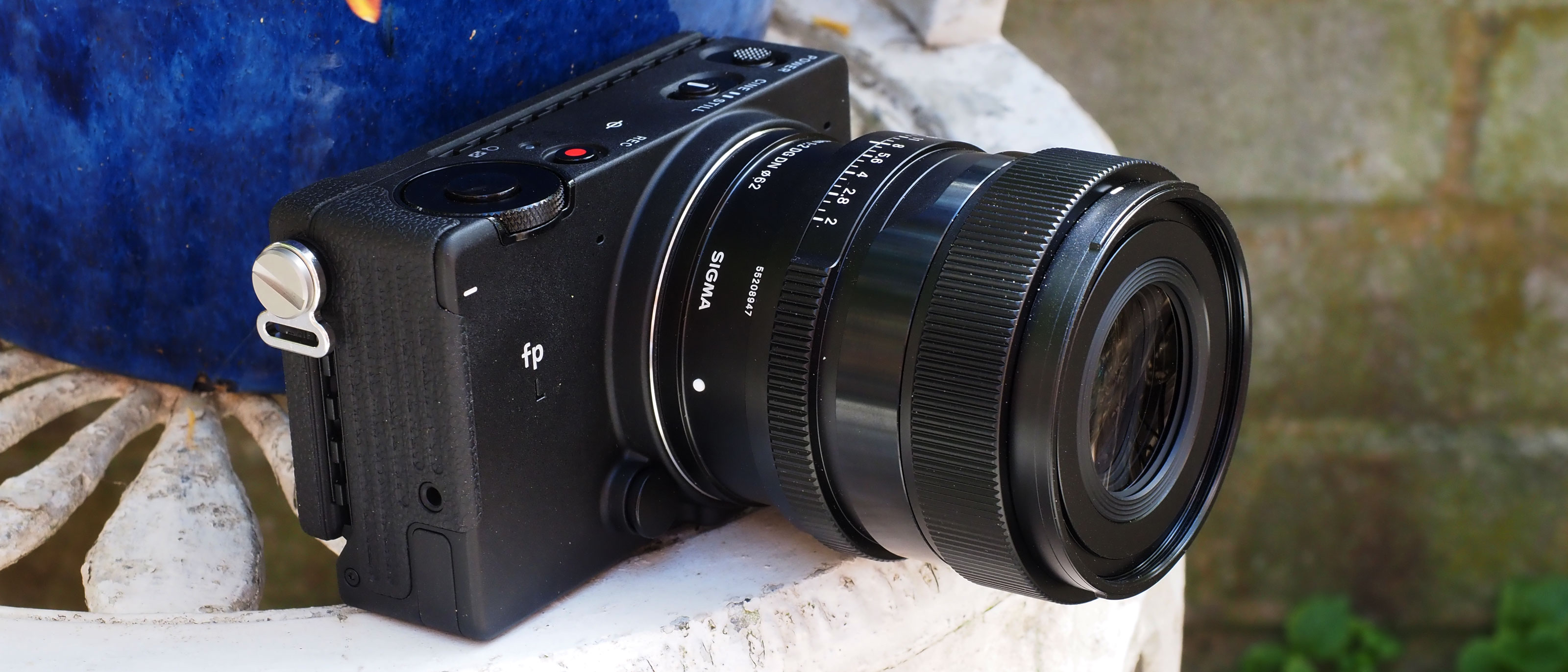Digital Camera World Verdict
The Sigma fp L’s tiny body does bring some handling issues and places a lot of reliance on external accessories – not least its optional clip-on EVF – and while the new phase-detect AF system is great for stills, the video AF remains slow and unreliable. But what this camera can do, with both stills and video, is remarkable at this price. This is a proper little cine camera – and how many of those can also shoot stills at the highest resolution of any full frame camera on the market (alongside the Sony A7R IV)?
Pros
- +
Small size
- +
Very good value
- +
Dual Still/Cine modes
- +
61MP resolution
Cons
- -
Awkward with bigger lenses
- -
Poor video AF
- -
Fixed rear screen
Why you can trust Digital Camera World
The Sigma fp L is a 61-megapixel version of the original Sigma fp launched back in 2019. From the outside, the two cameras are identical, so that the Sigma fp L has the same compact, rectangular shape with a fixed rear screen and a switch on the top for swapping between Cine and Still modes.
The Sigma fp concept is odd but intriguing. Sigma wanted to make a modular camera that could be adapted to all sorts of uses. The fp L is basic in the extreme: there’s no built-in viewfinder (though you can clip on an optional EVF unit sold separately or as part of a kit), and the rear screen doesn’t even tilt.
The idea is that you get the accessories you need for particular kinds of work and ‘build’ your working rig accordingly. The fp body might be basic, but it has standard threaded attachment points on either side of the body for lights, microphones, external monitors or the optional EVF. You can use the fp L as is, as a fully functioning camera in its own right, but it’s also designed to fit neatly into the heard of a video/cinema camera shooting rig.
The principle differences between the Sigma fp and the Sigma fp L are that the new model has a 61-megapixel sensor and hybrid contrast/phase detect autofocus.
Specifications
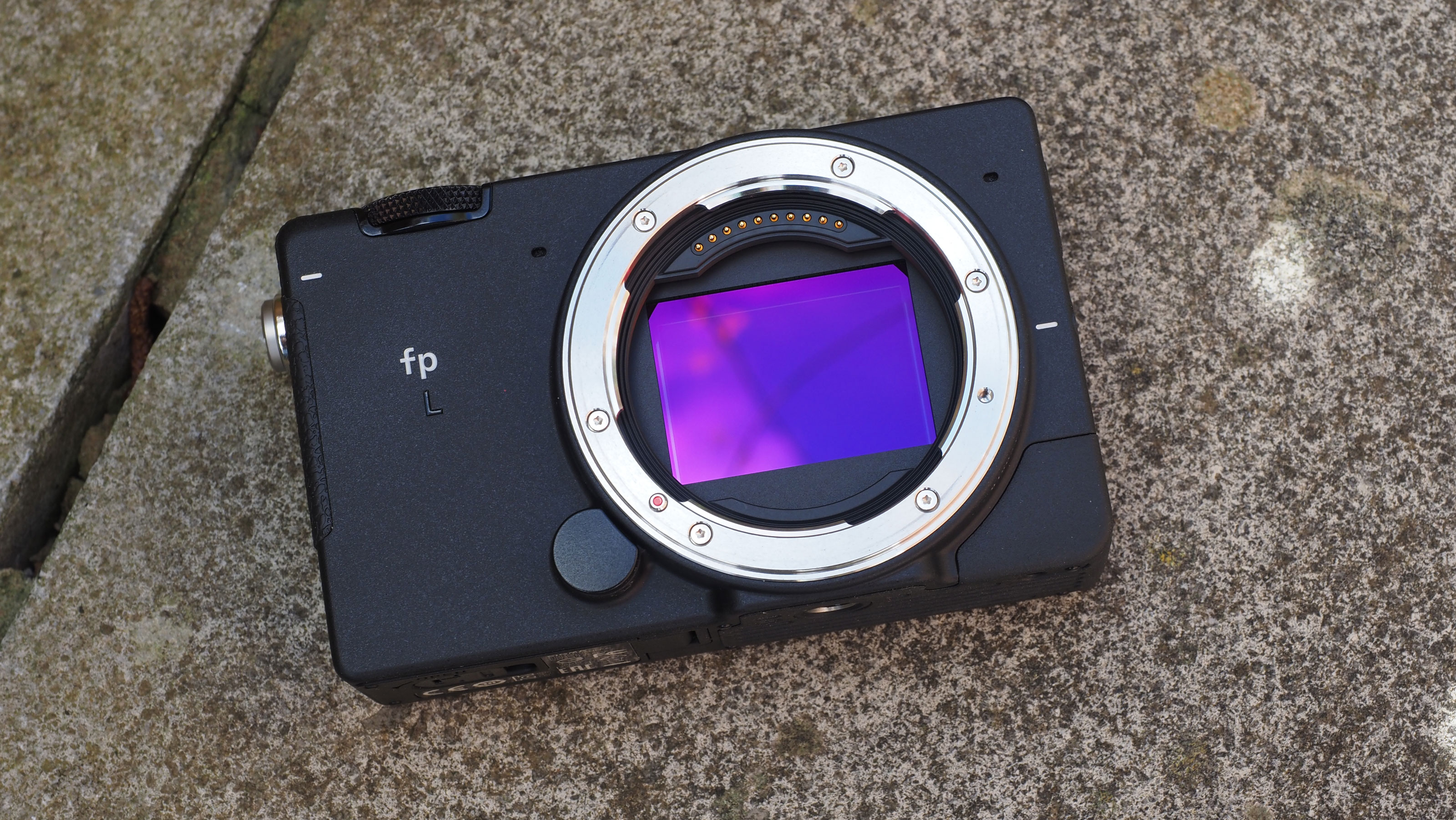
Sensor: 61MP full-frame back-illuminated Bayer CMOS
Lens type: L mount
Image processor: Not quoted
AF points: 49 selectable AF points
ISO range: 100-25,600 (expandable to 6-102,400).
Stabilization: EIS, video only
Max image size: 9520 x 6328px
Video: 4K UHD up to 30p, 8-bit CinemaDNG up to 25p internal recording, 12-bit CinemaDNG up to 30p to portable SSD, 12-bit ProRes RAW to Atomos Ninja V or Blackmagic RAW to Blackmagic Video Assist 12G
Viewfinder (optional EVF-11): 0.5-in, 3.68m dots
Memory card: 1x SD/SDHC/SDXC, UHS-II compatible
LCD: 3.15-in fixed touchscreen, 2.1m dots
Shutter speeds: Electronic shutter only, 30-1/8000sec, bulb up to 300sec
Max burst: 10fps for 12 frames
Connectivity: Wi-Fi/Bluetooth not supported
Size: 112.6 x 69.9 x 45.3mm
Weight: 427g body only, including battery and memory card
Key features
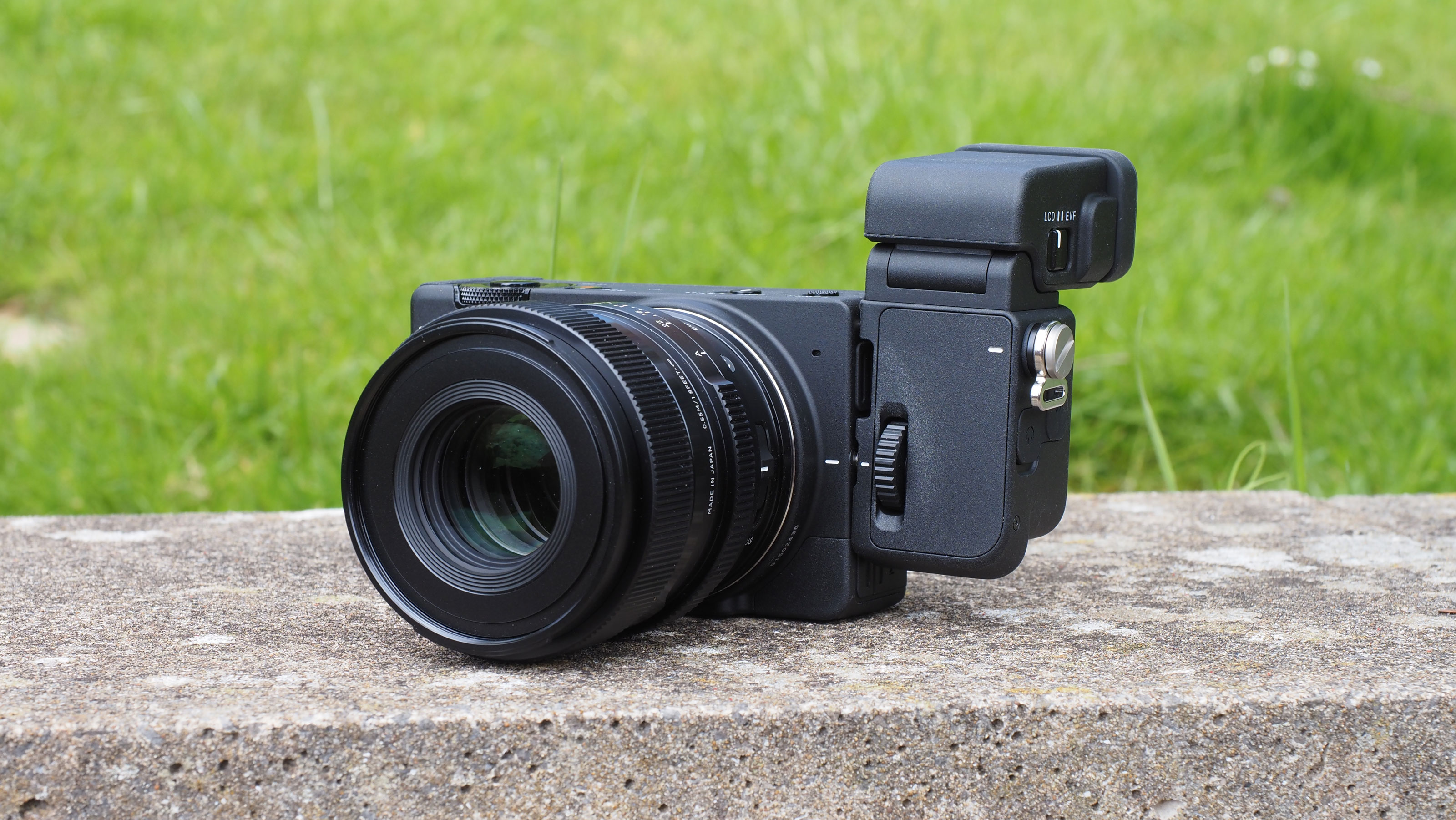
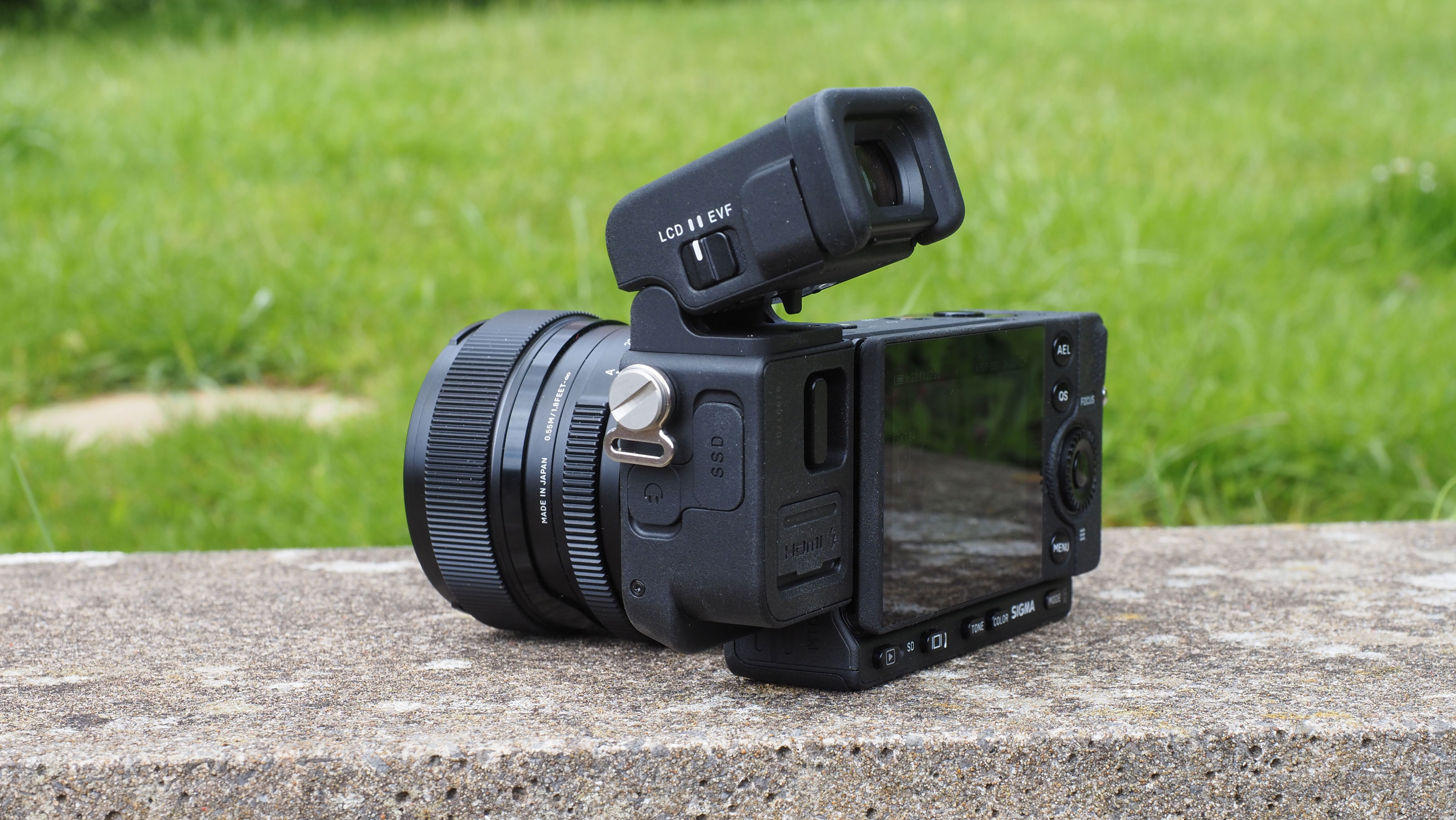
That 61MP sensor deserves a closer look because it makes the fp L the joint highest resolution full frame camera you can buy, alongside the Sony A7R IV (also 61MP). Interestingly, in the pursuit of all-round image quality, Sigma has decided to buck the trend and include a low pass filter. In theory, this may lead to a slight softening of fine detail but should prevent any moiré interference effects.
The 61MP resolution has no direct impact on the video specifications – both the fp and the fp L capture full width 4K video at up to 30p, though the extra resolution of the fp L ushers in a new concept – a Digital Crop Zoom feature. Essentially, you can zoom ‘digitally’ without losing resolution because you’re already starting with a surplus of megapixels. If you shoot 4K, you can get a zoom ratio of up to 2.5x, and in full HD it can go to 5x.
There’s no in-body stabilization and many L-mount lenses don’t have optical stabilizers – but the Sigma fp L does have EIS (electronic image stabilization) which brings a 1.24x crop factor.
The contrast based autofocus in the original Sigma fp proved pretty plodding, so the new hybrid phase-detect capability in the fp L is very welcome, and comes with automatic face and eye detection and subject tracking modes.
Other improvements include the addition of two new Color modes – the new Powder Blue and Duotone modes now bring the total to 15.
Our pick of the best lenses for the Sigma fp and fp L
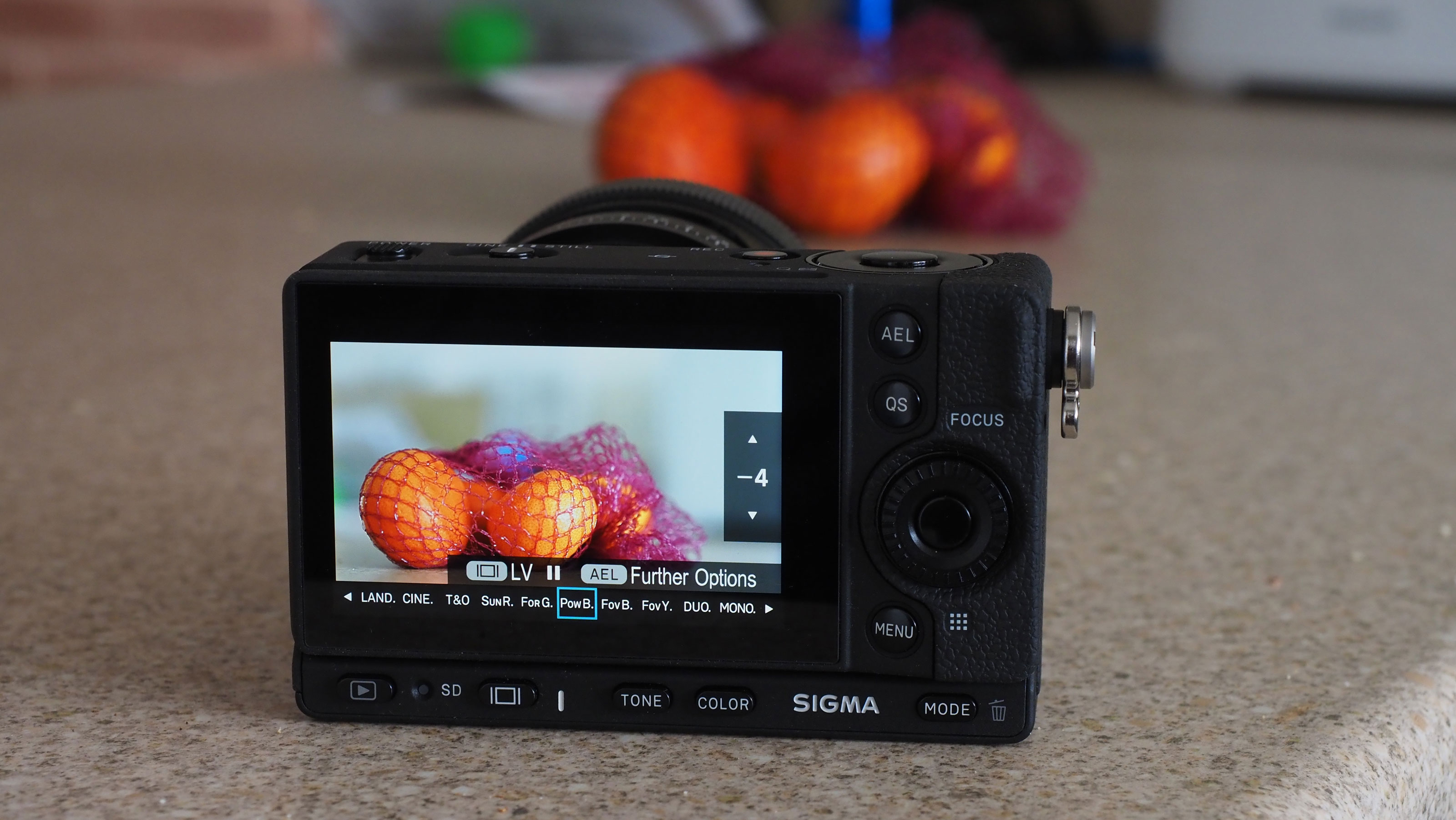
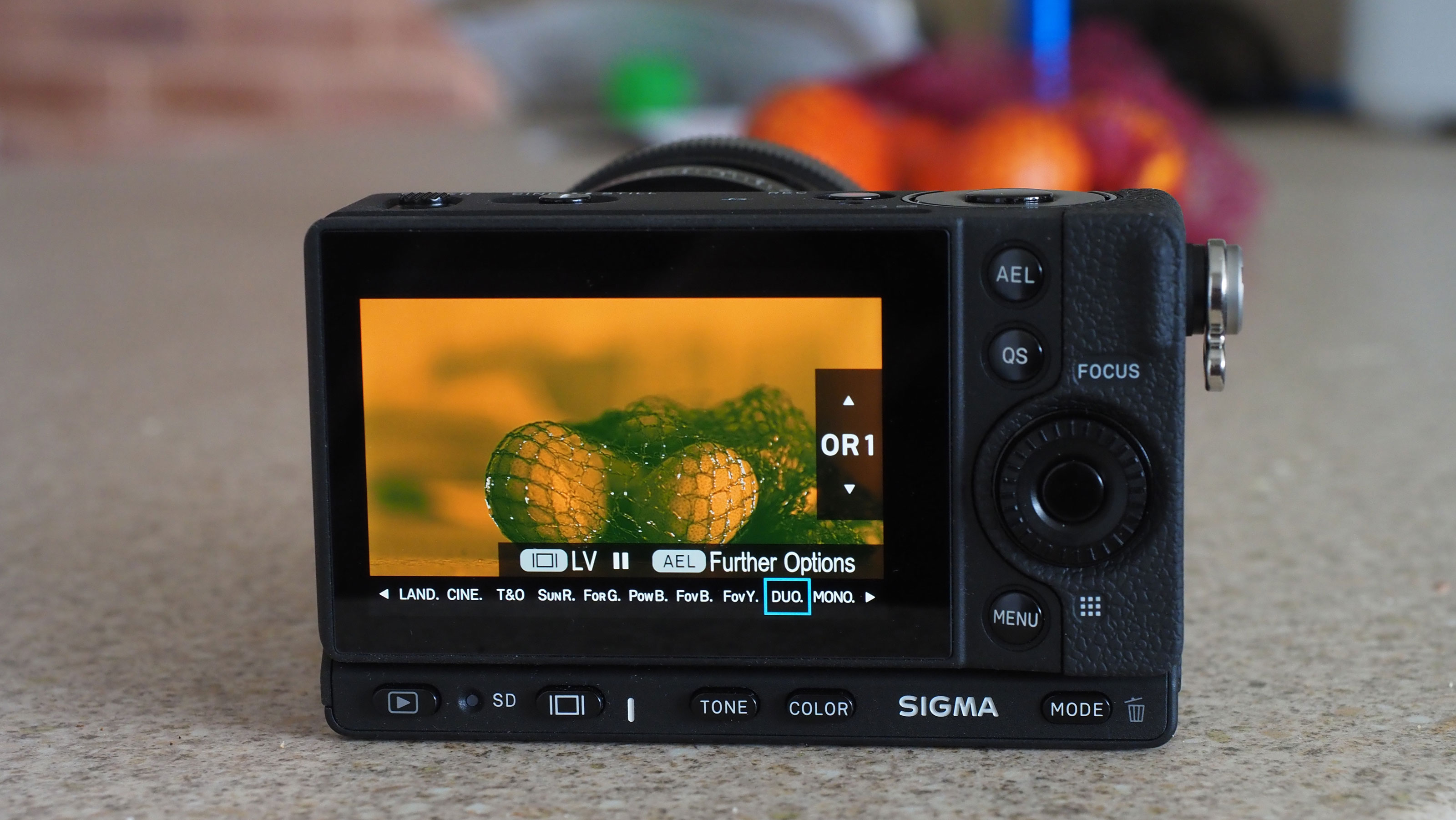
The Sigma fp L not only supports USB charging, you can keep using the camera while it’s charging too, which makes it ideal for streaming – all the more so because the fp L will work as a webcam without any additional hardware.
There is a new add-on EVF-11 electronic viewfinder to use with this camera, which you can buy separately or save money by buying with the camera as a kit. This EVF has a 2.68m dot 0.5-inch screen and tilts upwards by up to 90 degrees. You will be able to use the EVF-11 with the older Sigma fp too, but only via a firmware update which is yet to come.
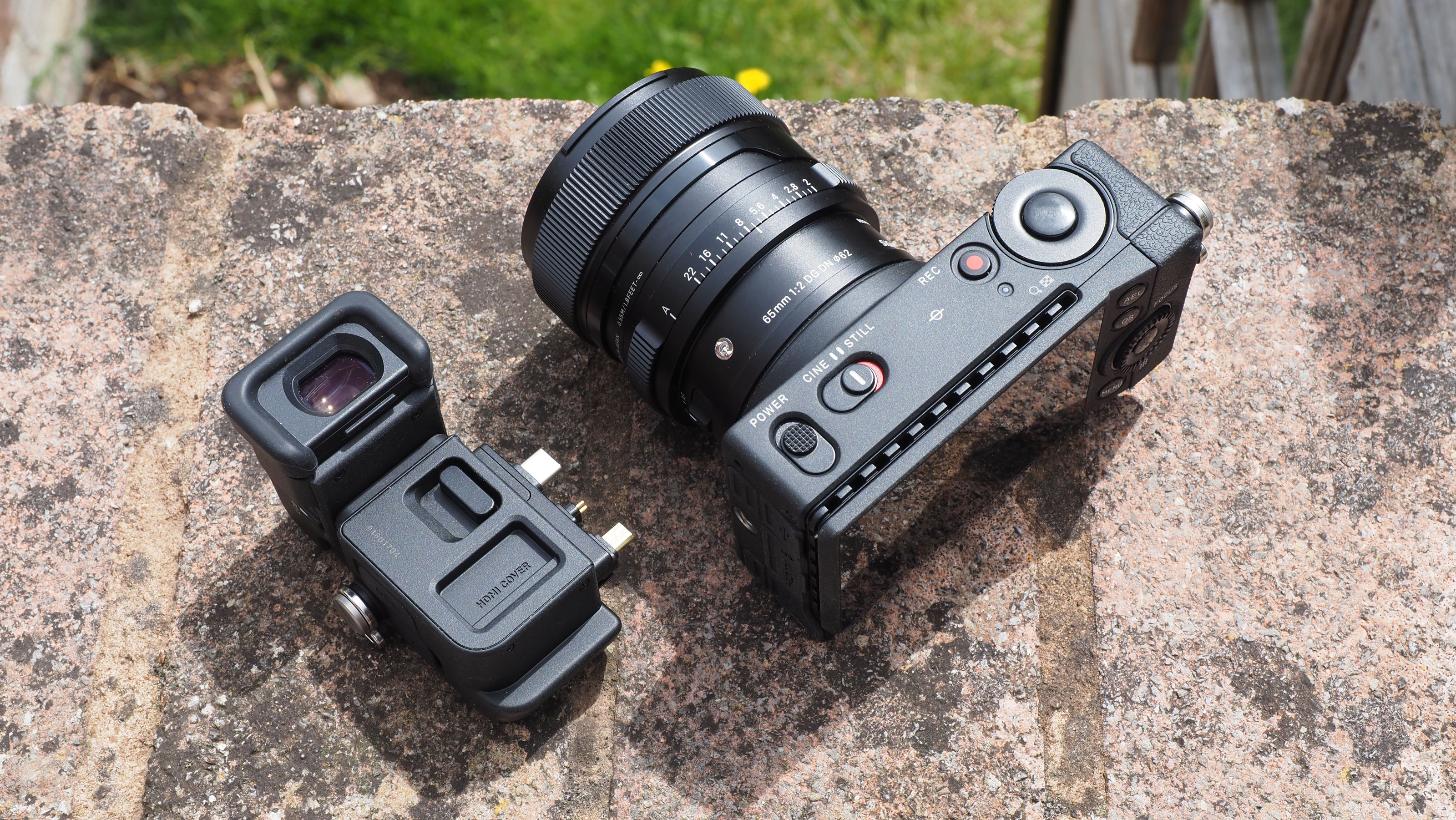
Sigma is keen that the fp L is seen equally as a stills and a cine camera. The video capture may top out at 4K 30p, but it can capture 8-bit CinemaDNG format internally, and up to 12-bit CinemaDNG to an external SSD connected by USB. Or you will be able to hook up a Ninja V for ProRes RAW or a Blackmagic Video Assist 12G for Blackmagic RAW capture. That’s not just one possible raw format, but three.
Sigma fp L camera control is supported by DJI RSC 2 / RS 2, ZHIYUN Crane 2S and Weebill S gimbals, which is good to know, since many gimbals stick to a small selection of best-known camera brands only.
Build and handling
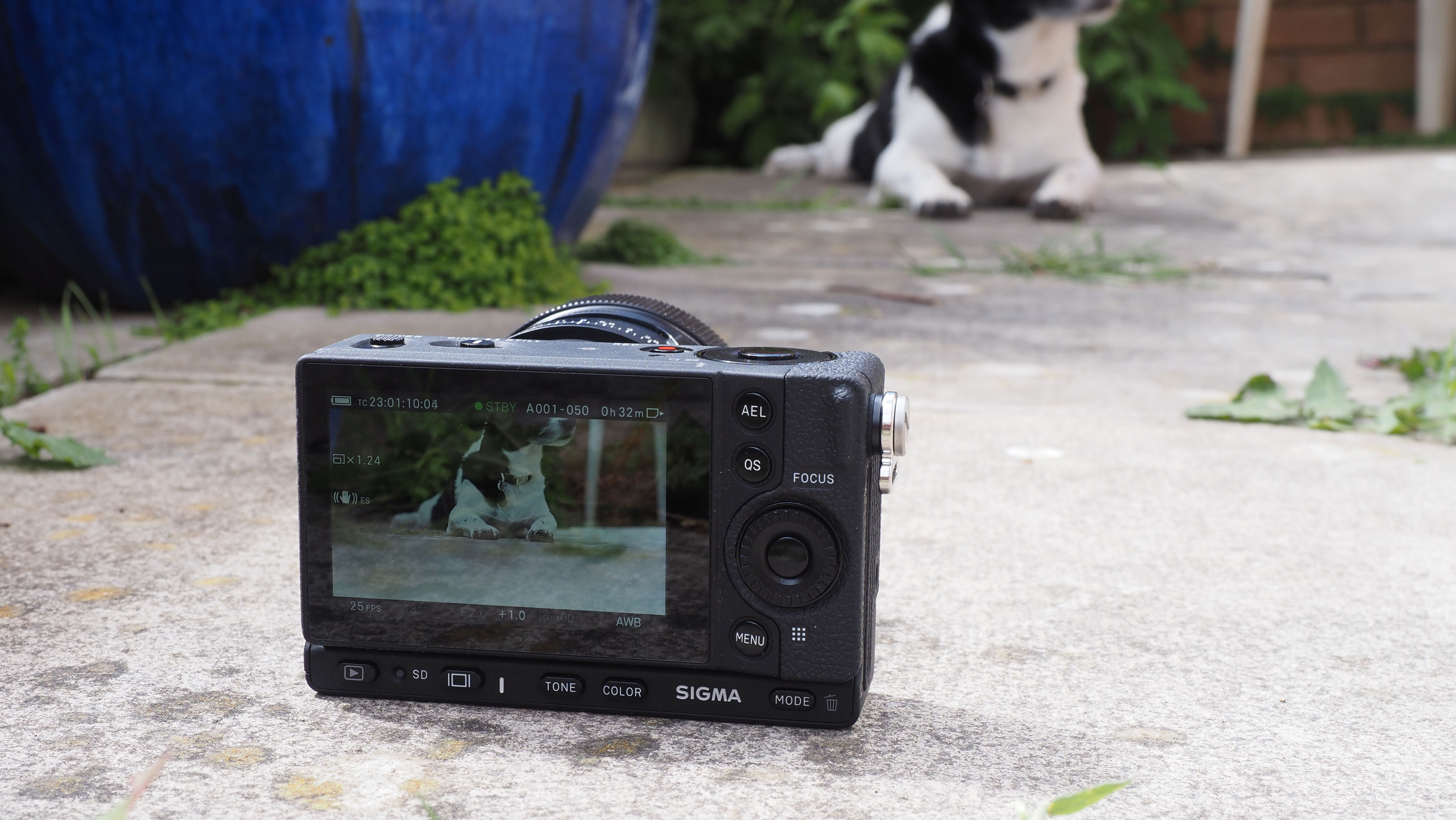
Sigma has done a remarkable job in designing the smallest full frame digital camera ever, but that’s not quite the end of the story. It’s also created a camera with no built in viewfinder, no in-body stabilization, no grip and a fixed rear screen.
You can use the Sigma fp L ‘naked’ and it’s perfectly effective within those limitations – but there is another. The Sigma fp L is tiny, but Sigma’s L-mount lenses are not. We tried the fp L with the Sigma 65mm F2 DG DN | Contemporary prime lens, which is as big as we would probably like to go with this camera handheld. We also tried it with the Sigma 24-70mm F2.8 DG DN | Art lens, which is just way too big for this camera and better suited to hefty L-mount cameras like the Lumix S1 series or Leica SL2.
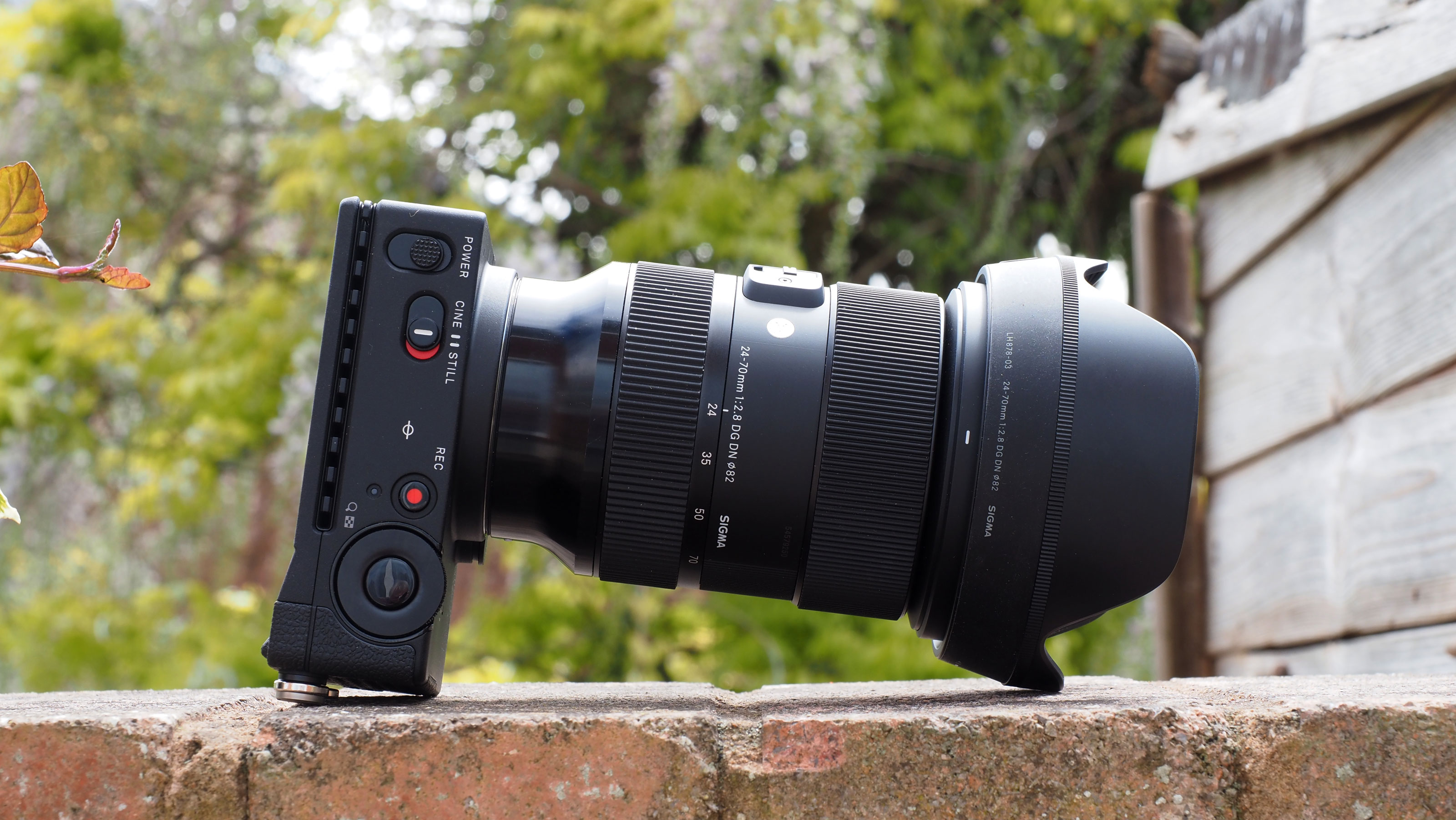
We previously tried the Sigma 45mm F2.8 DG DN | Contemporary prime lens on the earlier Sigma fp, and that was a nice fit. If you do want to use the fp L (or the fp) as a regular handheld camera, these smaller Sigma Contemporary primes seem to fit it best.
There are ways around this. For a start, Sigma is selling two optional grips for the fp L to make it a big more manageable with bigger lenses – the Hand Grip HG-11, which screws to the side, and the Large Hand Grip HG-21 which fixes to the base.
In fact the fp L has three standard screw thread attachment points – one n the base, which is a regular tripod socket, and one in either side of the body for fixing on accessories. You can use these for detachable camera strap eyelets, but the one on the left side is also used for attaching the EVF-11 electronic viewfinder.
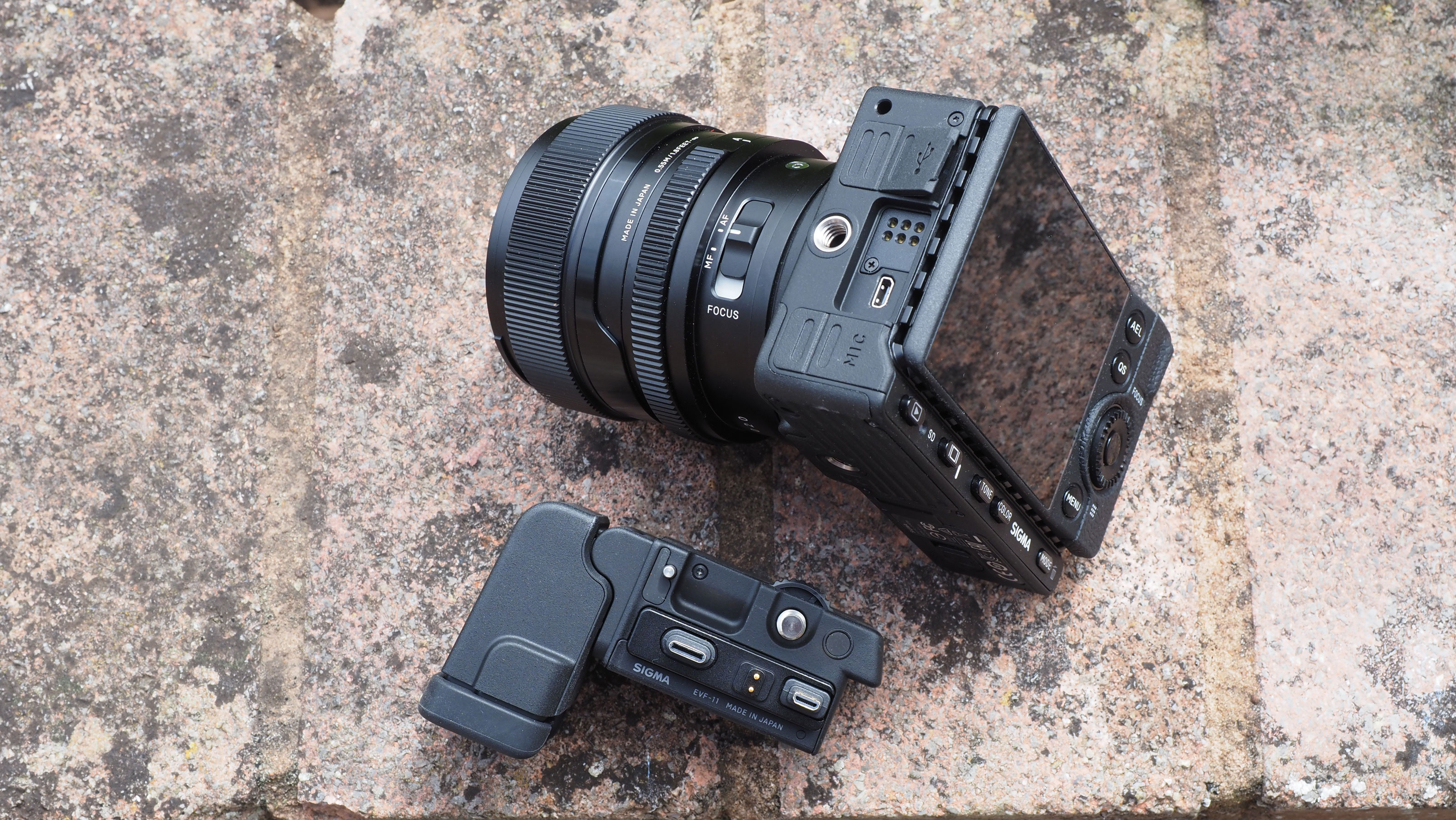
Fixing this on to the camera is a little like fixing a battery grip to the base of a camera – but here you have to remove the HDMI port cover, fold back the USB port cover and line up two connectors and the attachment screw. It’s not difficult once you’ve got the knack, but it’s not something you’d want to to too many times during a shoot.
But you might have to. One issue is that although the EVF has a pass-through USB port, it’s not clear that this supports charging. One reason it’s not clear is that the EVF unit covers up the charging lamp at the side of the camera, so we’d be inclined to think not. Having to detach the EVF to charge or power the camera could be a real nuisance.
And while there’s a pass-through USB port for an external SSD recorder, you lose the camera’s HDMI output, so if you want to use an HDMI recorder, you can’t use the EVF.
In a final twist, if you want to monitor audio, you’ll need the EVF because that’s got a 3.5mm socket and the fp L body hasn’t.
The fp L’s modular design offers all sorts of different mounting points, rig configurations and shooting styles, but this is not necessarily a pick-up-and-go camera. You are going to have to give some thought to what you intend to shoot, the best way to do it and how to get the camera and its accessories set up.
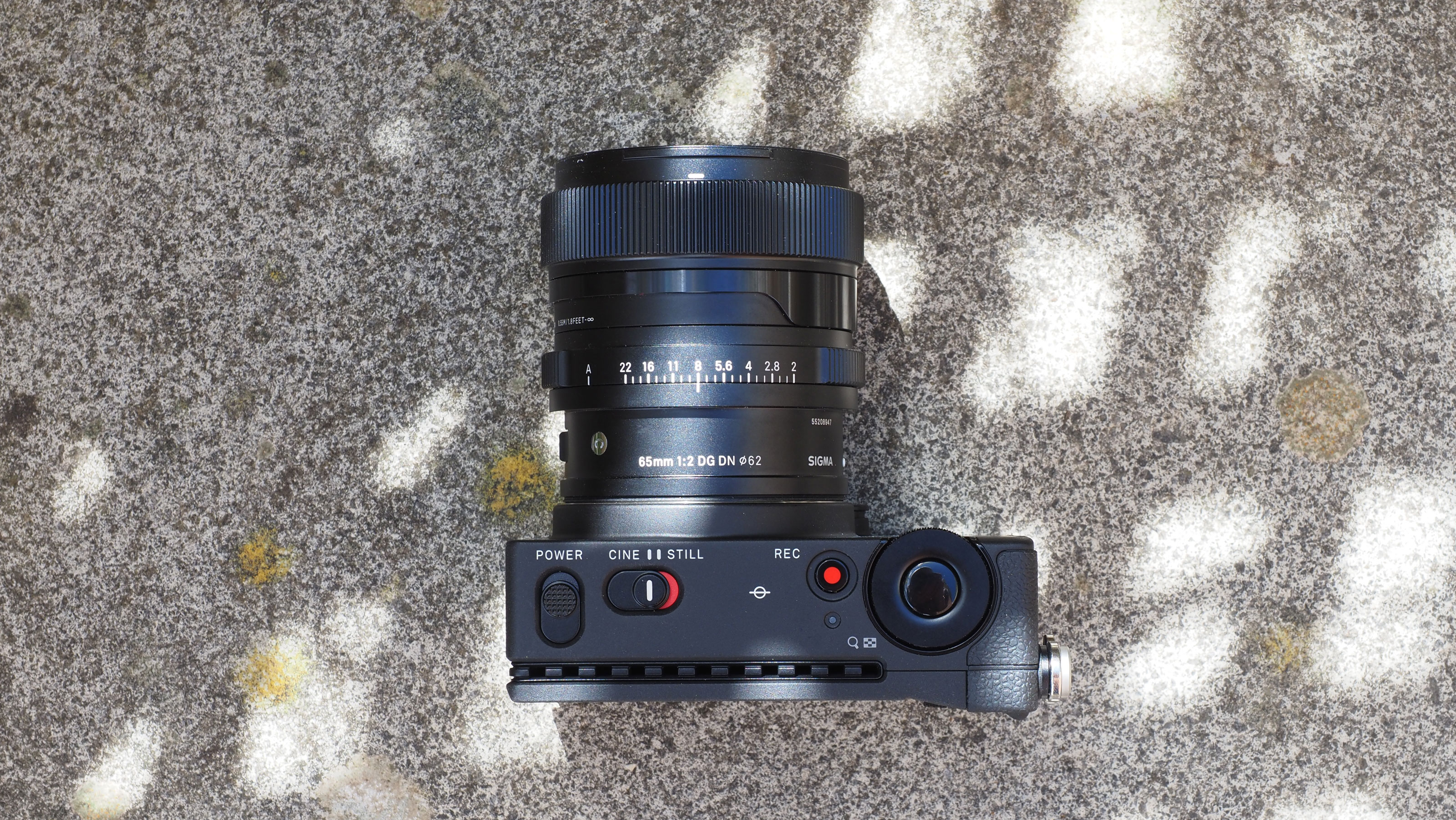
That said, the fp L’s user interface is a masterpiece of simplicity and clarity. It’s a bit to easy to confuse the power switch with the Cine/Still switch initially, but the quick and simple separation of these two functions is brilliant. The Cine mode even has a choice of interface designs for ‘still-style’ menu options for crossover content creators still learning the ropes and a proper cine display for professional filmmakers.
The menus are clear and concise and, while there is a fairly heavy reliance on this digital interface, you may still left wondering why other cameras need so many knobs and dials.
The fixed rear screen puts the Sigma fp L at a disadvantage compared to nearly all its rivals, but the design does include a passive heat dissipation system sandwiched between the screen and the camera body.
Performance: stills
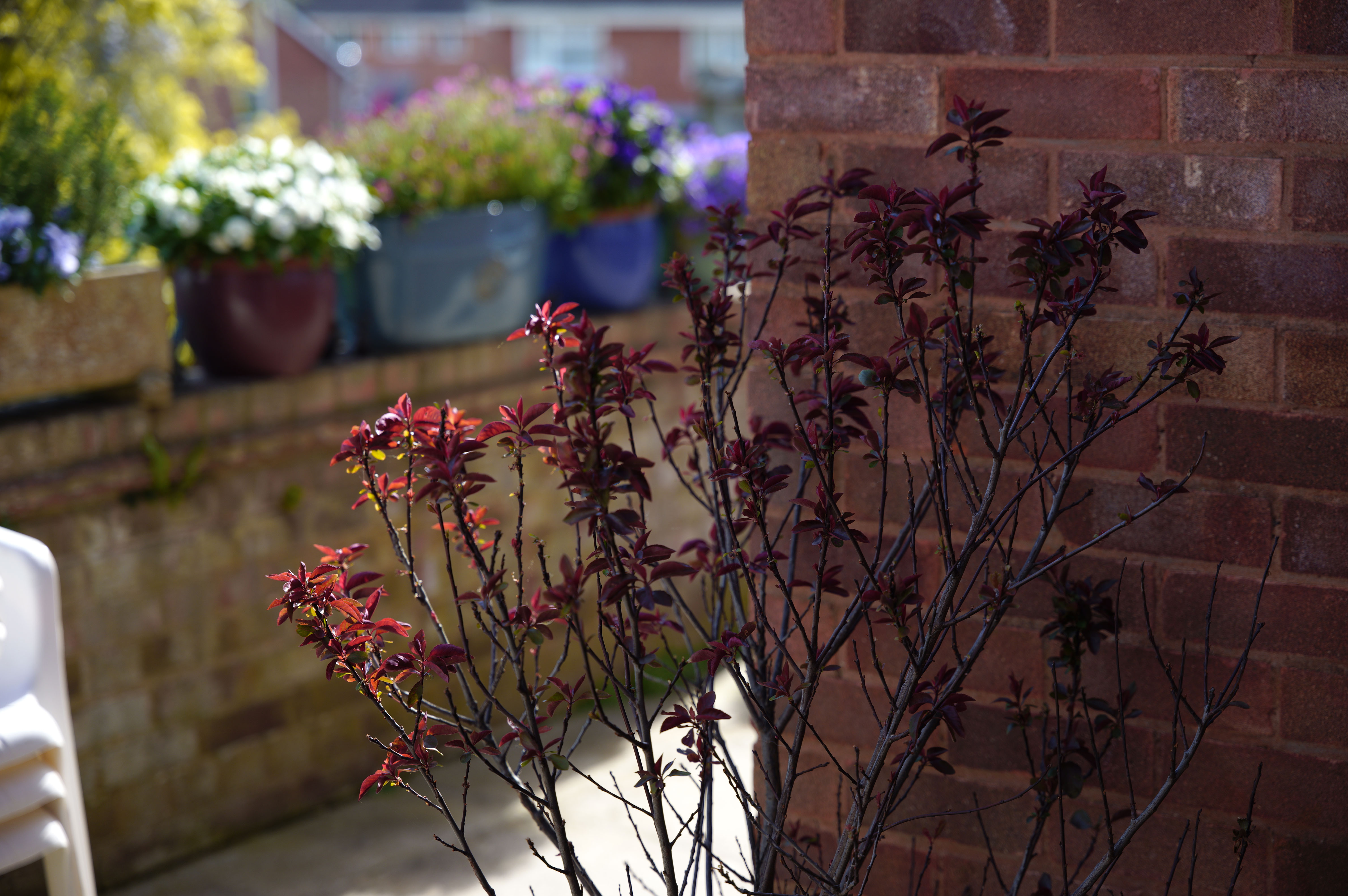
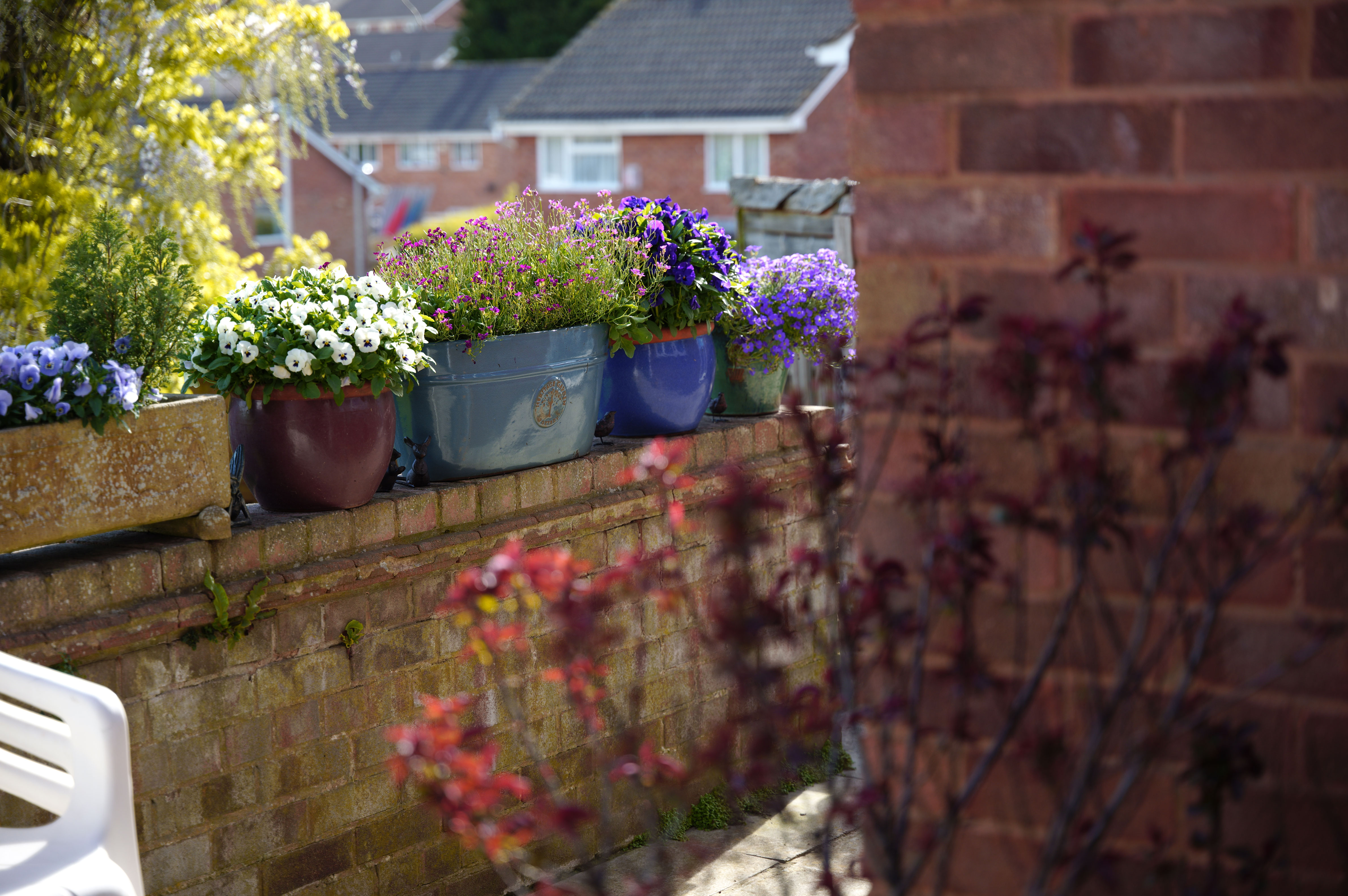
We’re looking at stills performance separately to video to reflect this camera’s two distinct roles, and the two main points of interest for stills photographers are the 61MP resolution and the new phase-detect AF system.
Getting still image files this big from a camera that is so physically small is quite something. Interestingly, Sigma has opened to use a low pass filter with this sensor, which means that the ultra-fine detail rendition is affected somewhat, but with 61 million pixels on tap, there’s probably plenty to go around – and at least you won’t have to worry about moiré in fine textures and patterns.
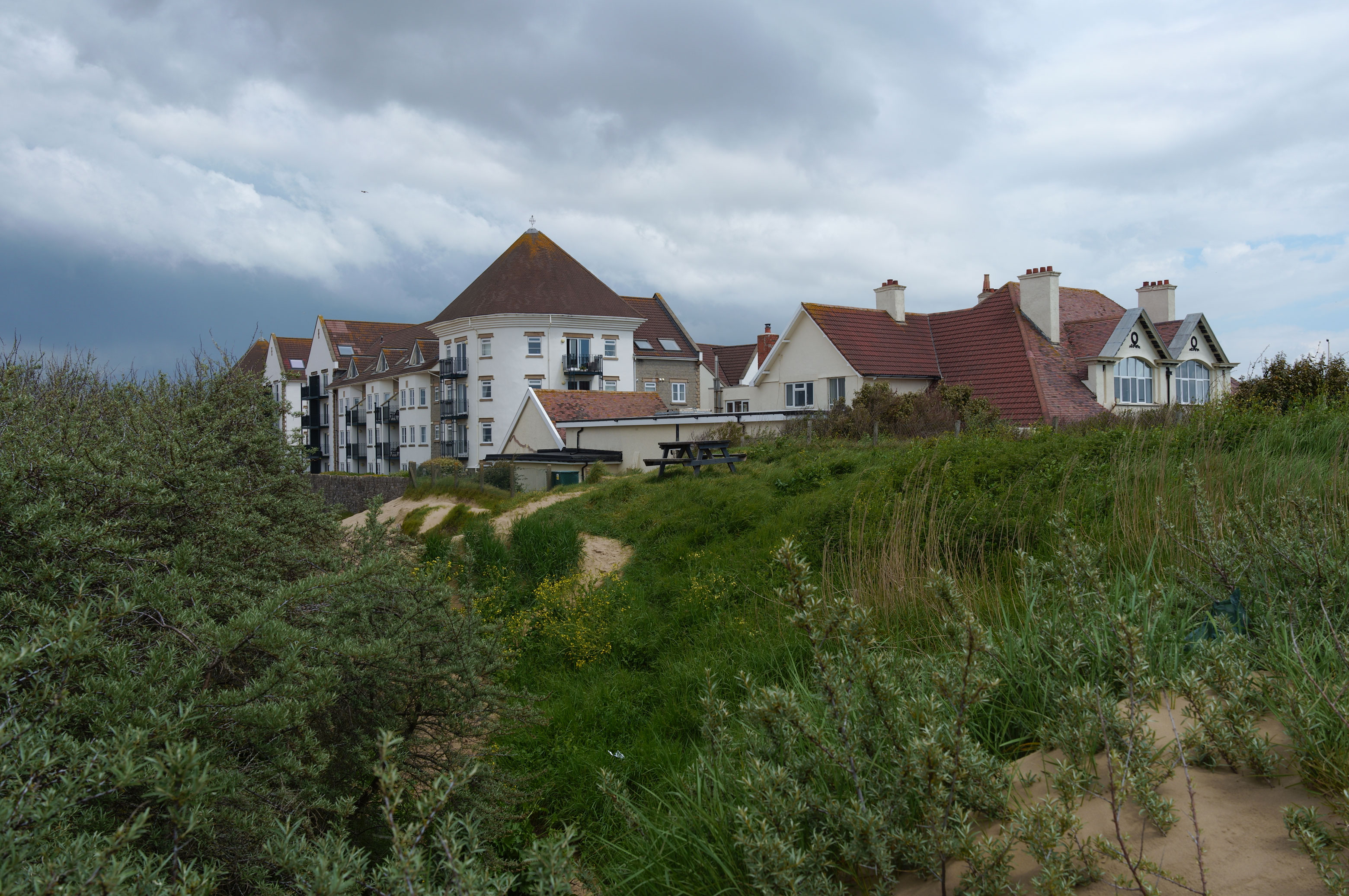
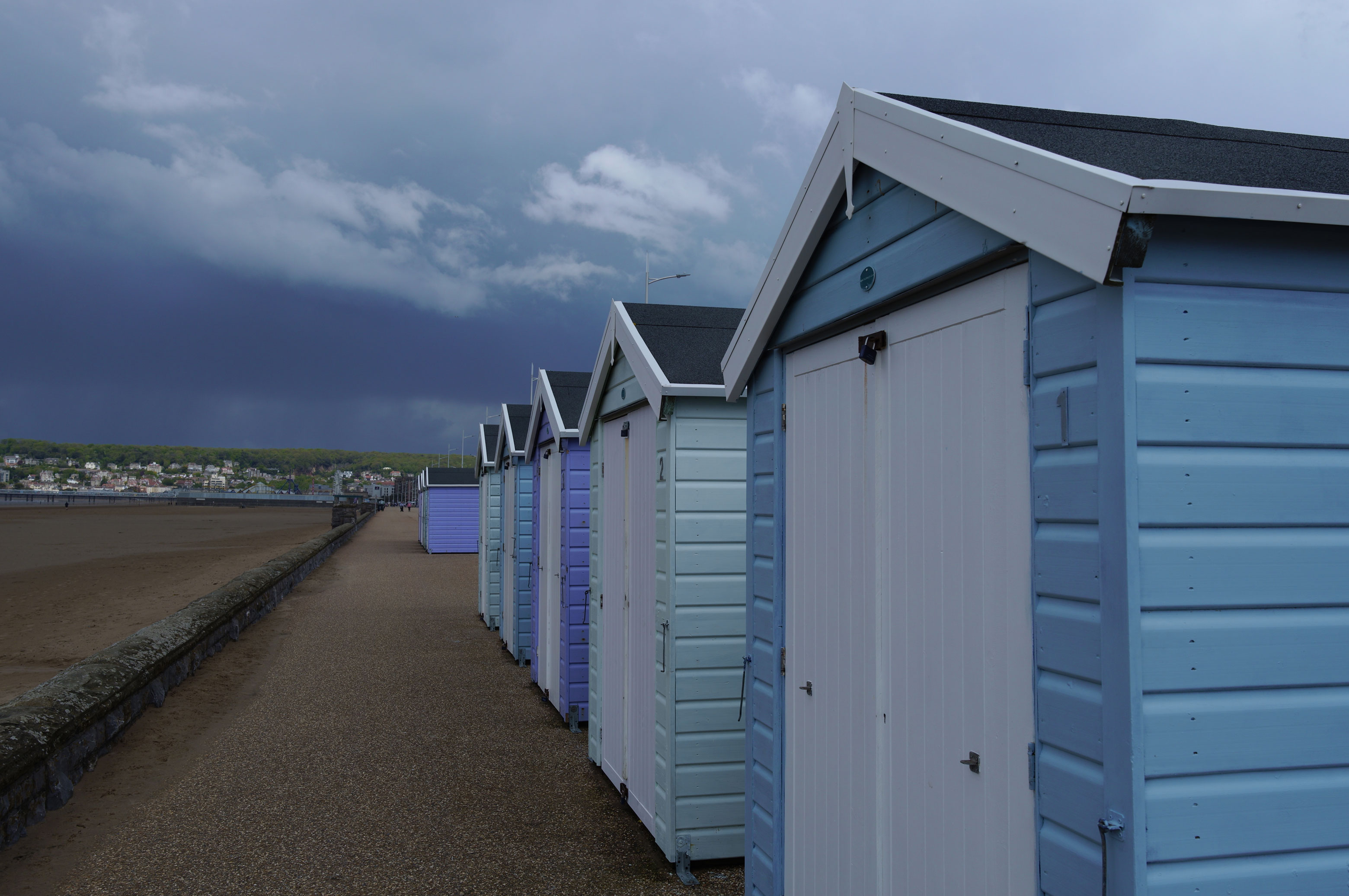
Images are sharp, clear and detailed – there is no compromise in still image quality from using this dual purpose camera. For stills photography, and especially with zoom lenses, you might want to get the add-on EVF and one off the optional grips.
Thanks to the new hybrid phase-AF technology, the autofocus feels as snappy, positive and reliable as the systems in rival cameras. The face/eye detection and subject tracking work well. At the very least, for regular stills photography, this camera’s AF system is at no real disadvantage.


The shutter is electronic, however – there is no mechanical shutter – and the extremely slow maximum flash sync speed of 1/15sec (1/10sec for 14-bit RAW files) is a clue that this sensor’s readout speed is not that fast. So while is does offer fast shutter speeds, its overall ‘scan time’ is a lot longer, increasing the risk of distortion with fast-moving subjects. This is not a camera for sports and action, despite its promising-sounding 10fps burst speed.
Performance: video
Its internal CinemaDNG capture and the option to output 12-bit CinemaDNG to an SSD or ProRes RAW or Blackmagic RAW to a compatible HDMI recorder means that the video quality you get from this camera can be as good as you want to make it.
There are no log modes, but these are typically offered as a way to capture extended color and luminance information for color grading later – and with raw capture you effectively sidestep this problem.
But we have to talk about the autofocus. For stills photography, the new phase-detect AF works just fine. For video, the picture changes. In our tests, the fp L’s continuous video AF proved extremely slow and extremely unreliable.
One problem is that in Cine mode you have no AF indicators to give you any confidence that the camera is focusing in the right place – all you have is focus peaking, if you enable it. Technically it offers face/eye EF and automatic multi-zone AF point selection; in use, it was hard to see any evidence these were working properly.
What we found most effective was to use a single AF point, and get into the rhythm of the camera’s refocussing speed and not rush it – though it’s not ideal to have to adapt your filming technique to the camera. For focus shifts or ‘pulls’ it proved easiest just to tap a new focus point on the screen and let the camera refocus in its own time. In Cine mode it’s like the camera can refocus pretty quickly, but you have to tell it exactly what to focus on.
With no in-body stabilization, all you have (if you are using a non-stabilized lens) is the cameras EIS (electronic image stabilization). If you are shooting handheld, this could provide some useful additional stability.
The 61MP sensor does allow a rather clever Digital Crop Zoom feature that means you can start shooting in 4K then pinch to zoom in and yet stay at 4K right up until you reach 4K native resolution in the cropped sensor area – so you don’t lose any image quality through upscaling. It did seem to work really well, though while the Sigma’s EIS does take the edge off any handheld jitters, it does seem to ‘drift’ so that accurate framing can be difficult. Couple this with the uncertain AF, and you might just decide that this is a camera that needs to be on a tripod or a gimbal.
Lab tests
For our lab data comparison, we compared the fp L against three other high resolution full-frame mirrorless cameras: the Leica SL2, Nikon Z7 II and Sony a7R IV. We're currently reassessing our lab data for the Panasonic S1R (a more obvious comparison camera to the fp L), hence the Leica takes its place.
Resolution:
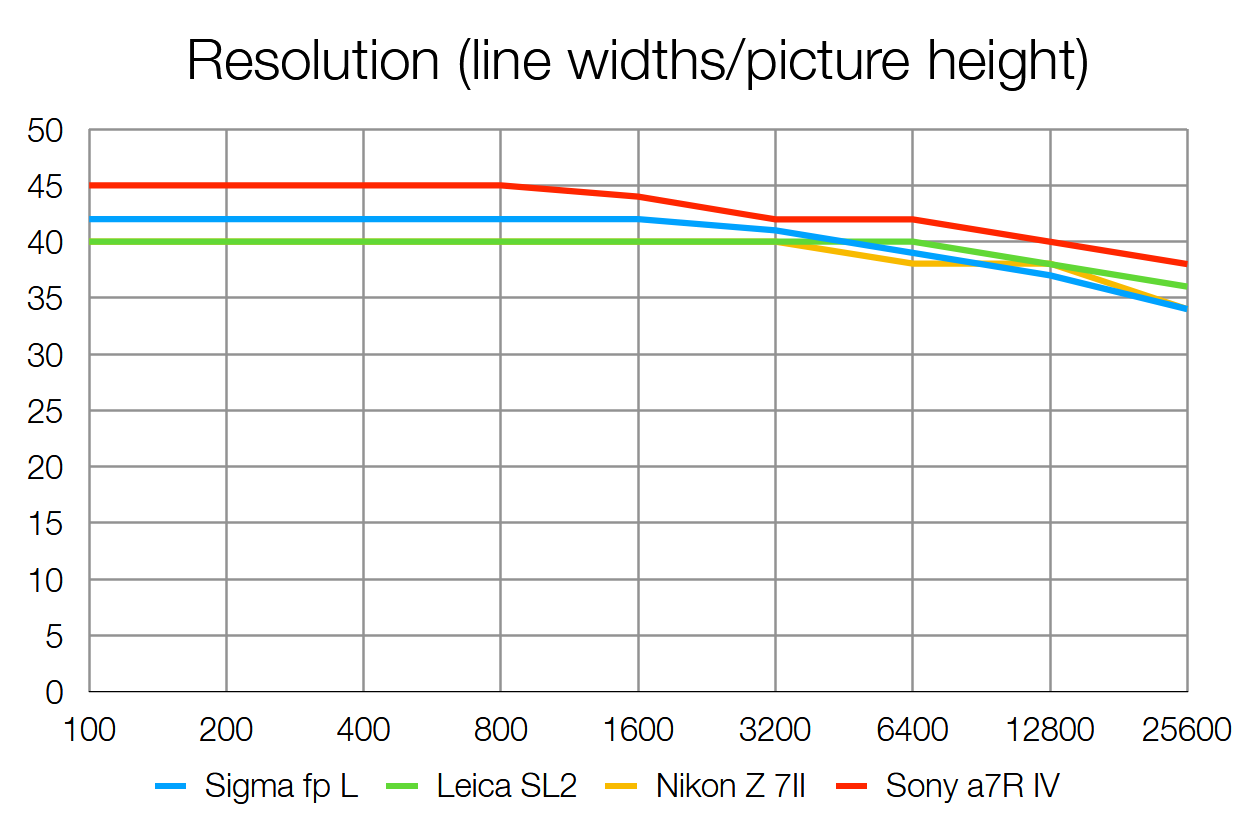
Resolution is measured using standardized text charts which give results in line widths / picture height, which is independent of sensor size.
Interestingly, though the Sigma fp L matches the Sony a7R IV in terms of sensor megapixels, the latter manages to resolve slightly more fine detail than the Sigma. The fp L actually resolves only a little more detail than the 45.7MP Nikon Z 7II and 47MP Leica SL2. The likely explanation is Sigma's decision to use an anti-aliasing filter in front of the sensor.
Dynamic range:
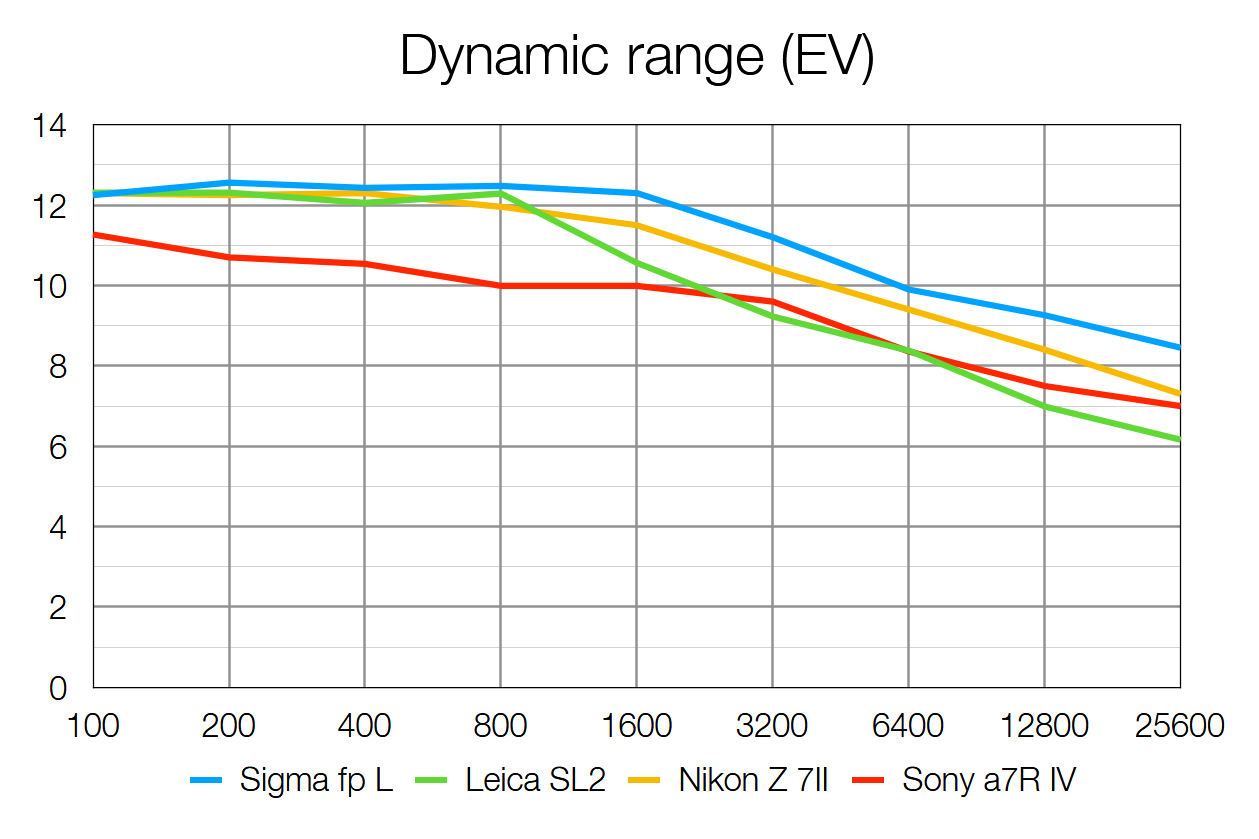
Dynamic range is a measure of a camera's ability to record extreme brightness ranges and still retain detail in the brightest and darkest parts of the scene. It's measured in EV (exposure values, or 'stops').
If the fp L's resolution scores are a little disappointing, the opposite is true for dynamic range. The Sigma capture's class-leading dynamic range throughout its sensitivity range, and it's particularly good at higher ISOs.
Signal to noise ratio:
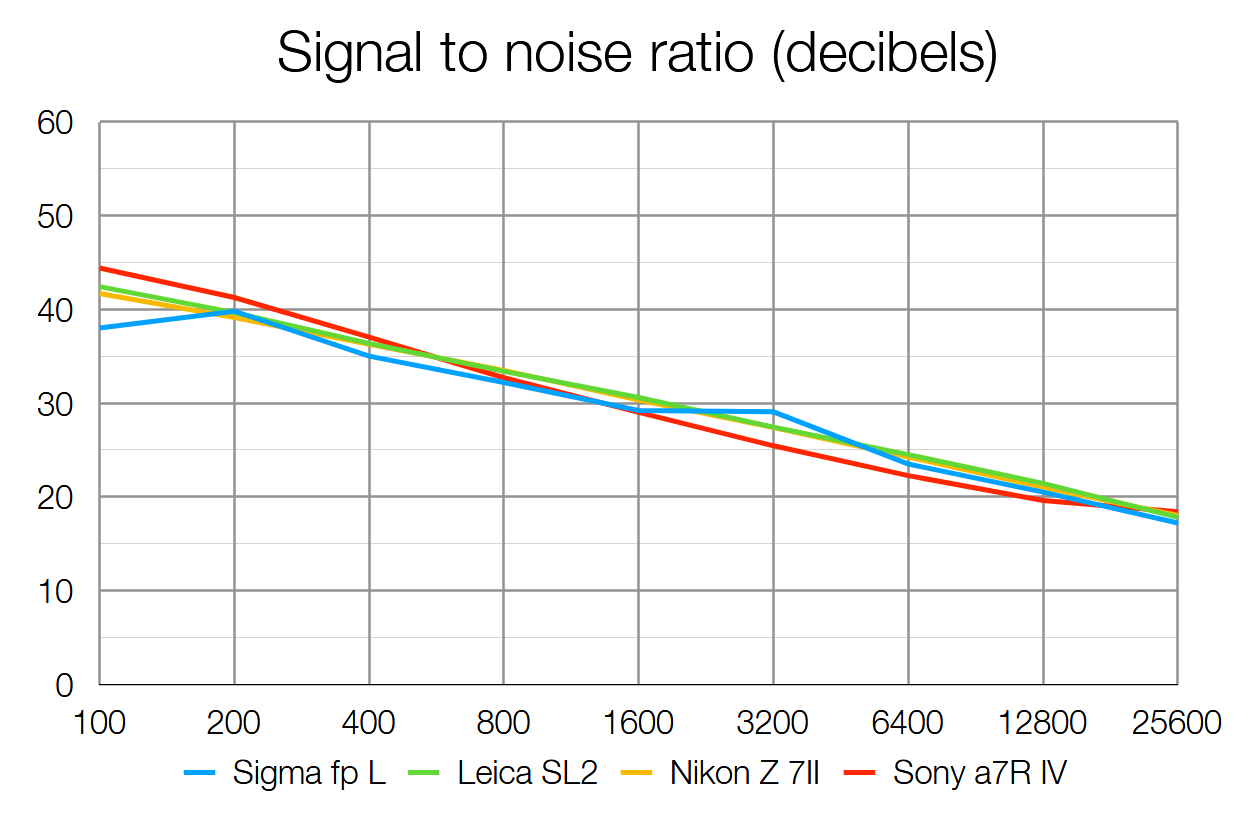
This compares the amount of random noise generated by the camera at different ISO settings as a proportion of the actual image information (the 'signal'). Higher values are better and we expect to see the signal to ratio fall as the ISO is increased.
All four comparison cameras are closely matched when it comes to image noise. The fp L is marginally noisier at lower sensitivities, but this isn't an issue as noise is very hard to see at low ISOs. It becomes apparent at higher sensitivities, and the Sigma scores better where it really counts, with good noise suppression. That's pretty impressive for a camera with this level of resolution, possibly helped by the fp L's dual native ISO circuitry.
Verdict
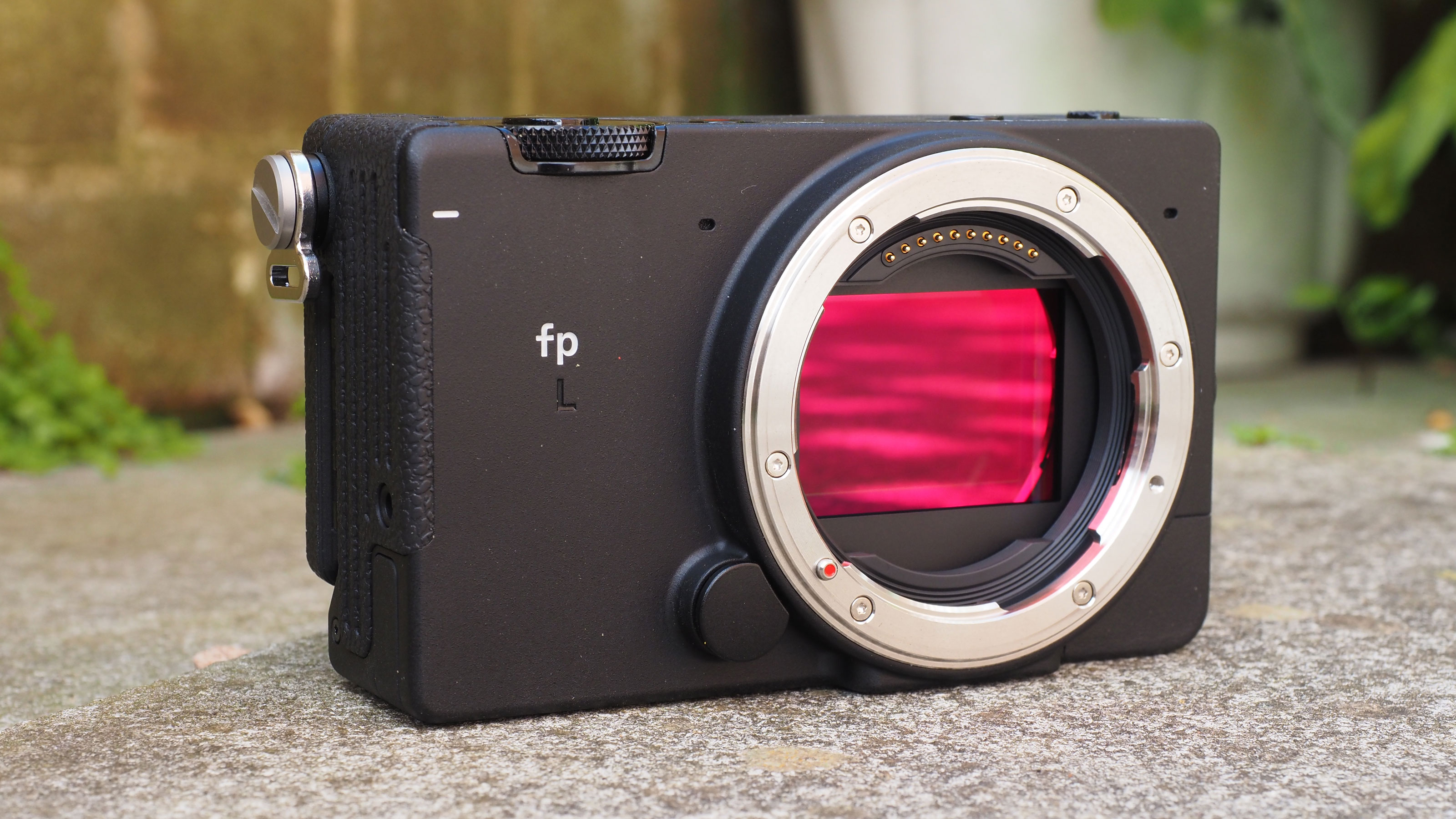
The Sigma fp L is a quirky and likeable camera that can shoot ultra-high res stills but is also a full-on cinema camera – and it does this without technically compromising either function.
But there are some handling and performance issues. The clip on EVF is neither cheap nor straightforward to work with, big zoom lenses will leave the fp L feeling uncomfortably unbalanced, and while the new AF system is great for stills, it’s sluggish and unpredictable for video.
The Sigma fp L is not an ordinary camera, however. It combines still and video functions with a seriousness and a balance that you don’t get anywhere else – and it does it at a very impressive price point. But while it can be used effectively handheld with smaller lenses, it definitely feels like it’s a camera that works best on a tripod or gimbal, or plugged into a proper video rig. It’s the size of a vlogging camera, but it’s actually a cinema camera that needs all the care and attention (and accessories) of a cine camera to get the results it’s designed for.
Read more:
• Best camera for video: basic buying advice
---
• Best cinema cameras
• Best cameras for filmmaking
• Best vlogging cameras
• Best mirrorless cameras
• Best professional cameras

Rod is an independent photography journalist and editor, and a long-standing Digital Camera World contributor, having previously worked as DCW's Group Reviews editor. Before that he has been technique editor on N-Photo, Head of Testing for the photography division and Camera Channel editor on TechRadar, as well as contributing to many other publications. He has been writing about photography technique, photo editing and digital cameras since they first appeared, and before that began his career writing about film photography. He has used and reviewed practically every interchangeable lens camera launched in the past 20 years, from entry-level DSLRs to medium format cameras, together with lenses, tripods, gimbals, light meters, camera bags and more. Rod has his own camera gear blog at fotovolo.com but also writes about photo-editing applications and techniques at lifeafterphotoshop.com
